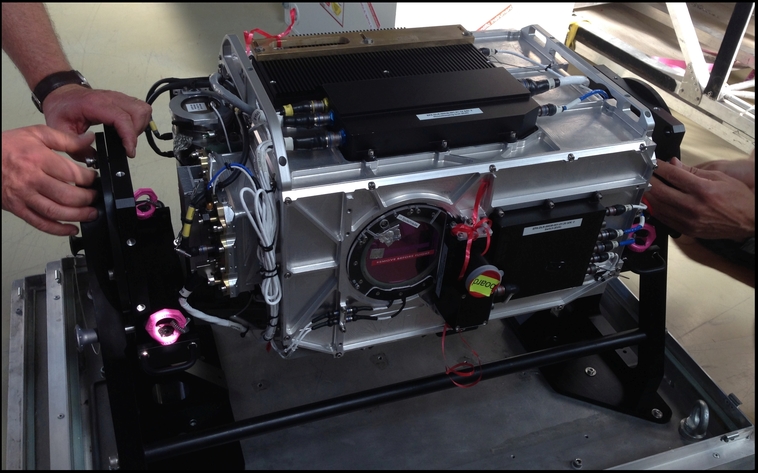AtmoSat relies on three main instruments. It combines infrared limb imaging (via Global Limb Radiance Imager for the Atmosphere, GLORIA) with narrow-band observations in other spectral ranges (via Multiple Eye for Remote Investigation of the Atmosphere, MERIA) and GPS radio occultation (via Triple GNSS = GPS/GLONASS/Galileo, TRiG) to provide synergies at the upper and lower measurement boundary.
GLORIA is an imaging Fourier spectrometer. It detects radiation emitted by gases and aerosols in the atmosphere against the background of deep space. A Michelson interferometer modulates the detected radiation and allows spectral discrimination. The focal plane array of GLORIA has several thousand elements. It is sensitive in the mid and thermal infrared spectral region. GLORIA produces hypercubes: data with high spatial and spectral resolution. It can be operated in two measurement modes. The landscape mode will be optimised with respect to the spatial resolution and the portrait mode enlarges the number of measurable trace species by increased spectral resolution.
The airborne GLORIA instrument is technical and scientific demonstrator of the AtmoSat main instrument GLORIA. The picture above shows the spectrometer of the airborne instrument. The application on satellite will require different technical solutions, nevertheless the picture can give an impression of the expected size of the instrument.
The whole instrumentation of AtmoSat is compact and can therefore be accommodated on a small satellite. Proven technical solutions for instrument and satellite are existing. Technical risks for the mission are considered as low.


